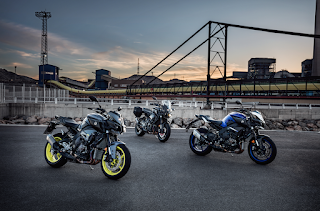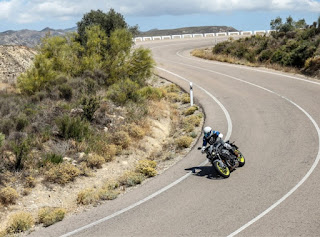| Dubbed the CP4 motor, owing to its cross-plane design, the R1-derived engine has been reworked to better suit road riding with less peak power and more low-to-midrange torque. As well as new cams, a different exhaust system and cylinder head, the EURO4 compatible motor also benefits from new throttle bodies. |

